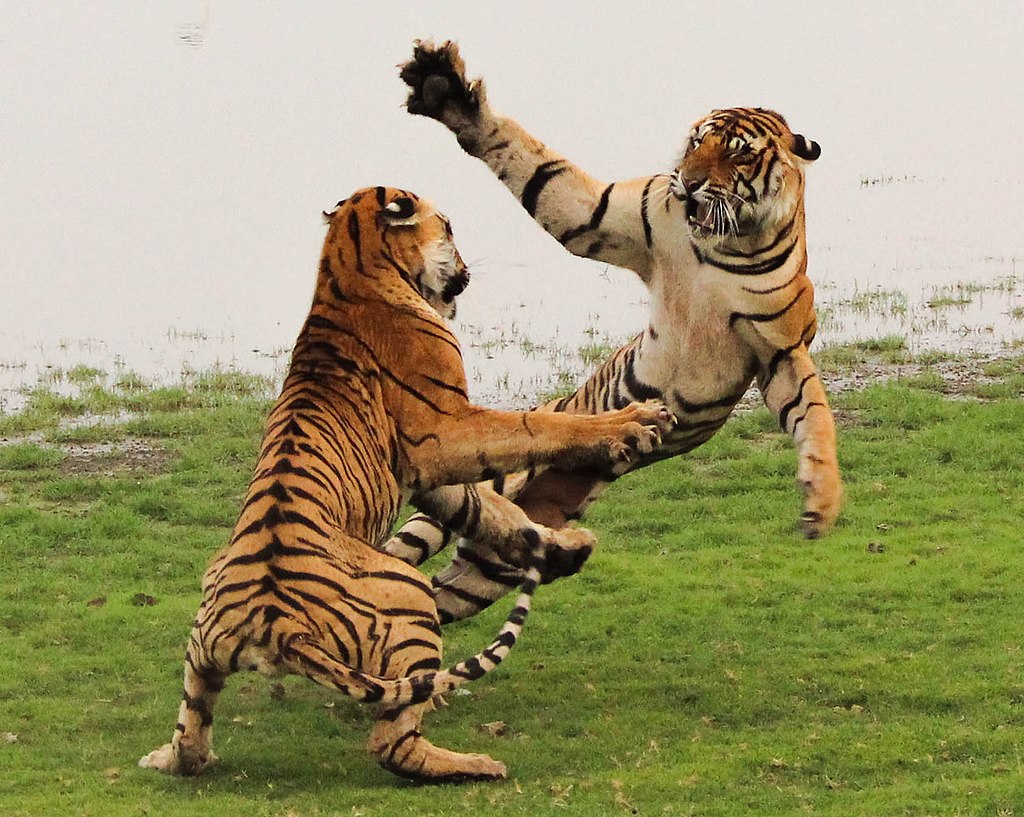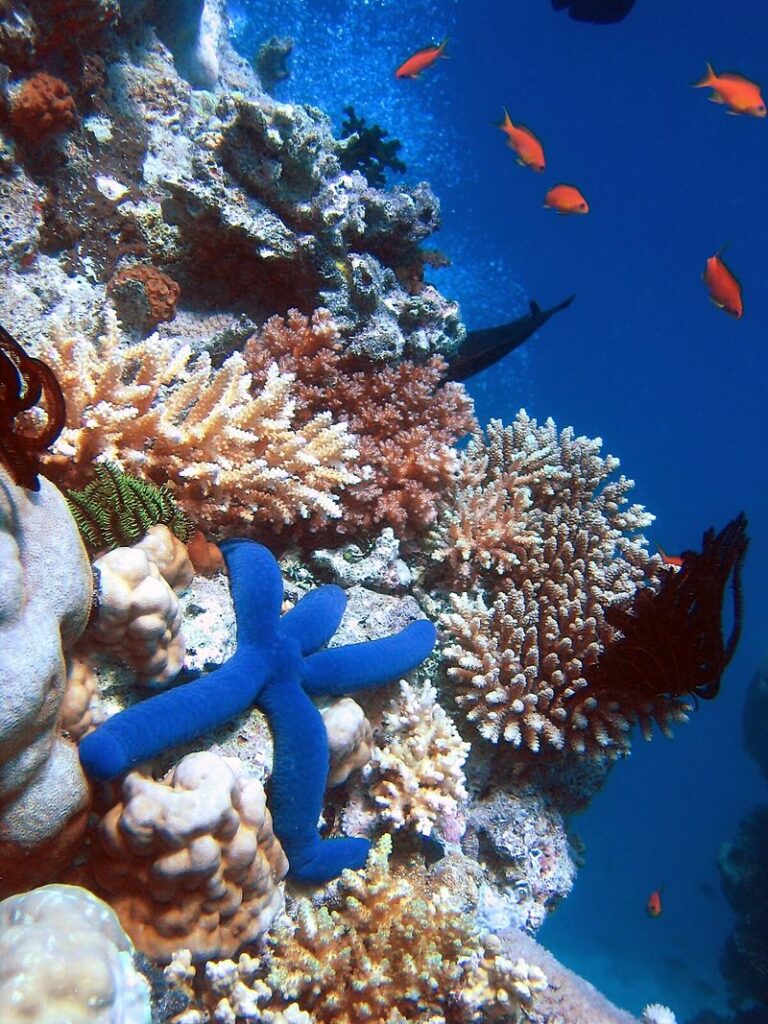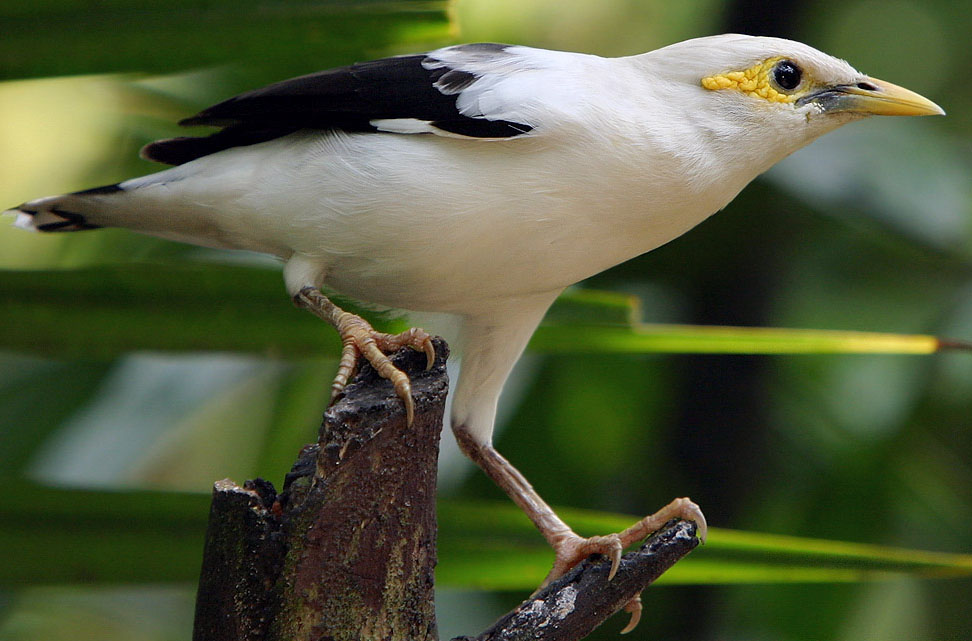Biodiversity is currently experiencing its Sixth Mass Extinction, driven predominantly by anthropogenic activities. Particularly, anthropogenic pressures in the form of habitat loss, overexploitation, pollution and climate change are the leading causes of species extinction and population loss. Most of the threats to wildlife can be traced back to these four underlying factors.
Climate change has resulted in the destruction of coral reef systems through increased bleaching incidents. Habitat loss, on the other hand, increases human wildlife conflict, reduces gene flow and diminishes an ecosystem’s carrying capacity as witnessed in the case of tiger (Panthera tigris) populations. Overexploitation, in the form of the illegal wildlife trade, has resulted in the Asian Songbird Crisis. Lastly, air pollution and heavy metal toxins have contributed to the significant population declines of hexapods, particularly that of pollinators. Amongst these pressures, habitat loss is the most severe threat to freshwater species.
Habitat Loss
Habitat loss, and fragmentation, has been accredited as the leading cause of species extinction. One particular species, which has been affected are tigers (Panthera tigiris). The species has lost 95% of its population lost since 1900 and exists in only 7% of their historic range (Luskin, Albert and Tobler, 2017). A minimum viable population of tigers, compromises of at least 20 to 25 breeding females. Even in optimal habitats with high prey densities, this would require an area of approximately 800-1000km2 (Jhala et al., 2021).
However, due to extensive habitat loss, 42% of tiger reserves in India have a core area smaller than this threshold (Jhala et al., 2021). Furthermore, habitat degradation, which further reduces the carrying capacity of an ecosystem. For example, capture- recapture modelling techniques estimated that the population densities of Sumatran Tigers (P.t sumatrae) were 47% higher in primary compared to degraded secondary forests (Luskin, Albert and Tobler, 2017). This can be attributed to a reduction in prey abundance and increased disturbance.

Habitat Fragemnation catalyses Inbreeding Depression
Habitat loss also contributes to the lack of connectivity between populations. This causes a reduction in gene flow. In fact, a study found that India’s tigers have lost 93% of their historic
mitochondrial DNA due to population fragmentation. The loss of gene flow and inbreeding depression increases the vulnerability of isolated populations to acute environmental stress, such as disease and natural calamities (Mondol, Bruford and Ramakrishnan, 2013).
Human Wildlife Conflict is Inevitable
Increased tiger human conflict is also associated with habitat loss due to reduced availability of natural prey and habitat fragmentation. Russia lost 55 tigers between 1985 and 2002 due to retaliatory killings in response to human tiger conflict (Kartika and Koopmans, 2013). Other than direct mortality, retaliatory killings can significantly alter population structure unnaturally. The removal of breeding males and females results in an increase infanticide rates by rival males and a reduction in reproductive rates respectively (Kartika and Koopmans, 2013). Nonetheless, despite being pushed to the brink of extinction due to overexploitation, tiger populations are steadily rising led by conservation measures in Russia and the Indian Subcontinent (Jhala et al., 2021).
How is climate change a threat to wildlife?
Coral reefs are amongst the most vulnerable taxon to population loss due to climate change. This can be attributed to an increase in sea surface temperature, sea levels and both the intensity and frequency of hurricanes. (Cornwall et al., 2021). Increased sea surface temperature induces coral bleaching, which refers to the termination of symbiosis between corals and the photosynthetic zooxanthella algae (Lesser, 2010).

The Death of Coral Reefs
Photosynthetic zooxanthellae, when exposed to temperatures above a certain threshold, produce reactive oxygen species. As these compounds are highly toxic for the host corals, the endosymbiotic algae are ejected, hence terminating symbiosis (Lesser, 2010). As the zooxanthella algae provides their hosts with more than 90% of their nutritional and energetic requirements, bleaching can increase coral starvation (Lesser, 2010).
Bleached corals experiences numerous sublethal threats, including increased disease susceptibility, impeded coral growth and reduced reproduction rates, which elevate mortality rates. In fact, the Great Barrier Reef lost between 29 to 50% of its corals due to coral bleaching in 2016, following high annual temperature anomalies (Cornwall et al., 2021). Moreover, the 2019 IPCC report estimate that a 1.5 °C increase in global temperature will results in a 70-90% decline in global coral reefs (Chen, 2021).
Extreme weather incidents are equally destructive
Global warming has contributed to the increasing frequency and incidents of summer hurricanes (Chen, 2021). As such, hurricanes are thought to be ecologically beneficial by reducing the thermal stress experienced by coral reefs during the warmer months, hence minimizing bleaching incidents. However, the increased intensity of hurricanes causes the outright destruction of reefs (Chen, 2021). Similarly, increased sea levels result in increased sedimentary deposition near corals, which hinders photosynthesis, and catalysing coral bleaching (Chen, 2021). Given the ecological significance of coral reefs, the impact of climate change needs to be mitigated.
The Illegal Wildlife Trade
One particular taxon which has recently suffered significant population declines due to overexploitation are Passerines. Overexploitation, in the form of the illegal songbird trade, has devastated species population across the world. A prominent example of this are the three subspecies of the critically endangered black-winged mynah (Acridotheres melanopterus, A. tricolor and A. tertius). Just over two decades ago, the three species were not considered globally threatened.

However, now there are less than 500 individuals remaining in the wild (Nijman et al., 2018). This is attributed solely to the capturing of these birds from the wild for the illegal songbird trade. It is estimated that between 1,300 and 2,300 mynahs are sold annually at a retail value of USD 170,000, across seven bird markets in Indonesia (Nijman et al., 2018). At a more regional scale, the Asian Songbird Crisis has been attributed to the illegal wildlife trade. As the demand for exotic pets continues to upsurge, passerines are being pushed to the brink of extinction due to overexploitation.
(Nijman, Nekaris and Ali Imron, 2018).
Polluting the Pollinators
Pollutants, of various forms, have depleted populations across ecosystems and taxon. Hexapods, especially pollinators, are highly sensitive to pollution. This is because they heavily rely on chemical communication for their survival. For example, a study found that in the presence of high concentrations of air pollutants, such as O3 and diesel exhaust, reduced the population of wild and managed pollinating insects by 62-70%. Moreover, the number of visits to their host flower saw reduced by between 83 to 90% (Ryalls et al., 2022). The chemistry of volatile organic compounds, produced by angiosperms are altered significantly by common air pollutants, hence disrupting pollinator-host relationships (Ryalls et al., 2022).
Furthermore, fine particulate matter from pesticides, industrial waste and vehicular exhausts can attach to the cuticles of insects, who then transfer these pollutants to their broods (Feldhaar and Otti, 2020). Similarly, the uptake of heavy metals from the soils by plants often result in the ingestion of these toxin by social bees during the consumption of pollen and nectar (Feldhaar and Otti, 2020). The ingestion of pollutants is known to cause severe physiological deterioration, in the form of lower tolerance of stressors, increased disease vulnerable and reduced learning ability. These physiological changes increase the mortality risk of hexapods significantly (Feldhaar and Otti, 2020).
Help us Help Them! Think Wildlife Foundation is a non profit organization with various conservation initiatives. Our most prominent campaign is our Caring for Pari intiative. Pari is a rehabilitated elephant at the Wildlife SoS Hospital. 25% of the profits from our store are donated to the elephant hospital for Pari. Other than buying our wonderful merchandise, you could donate directly to our Caring For Pari fundraiser.
